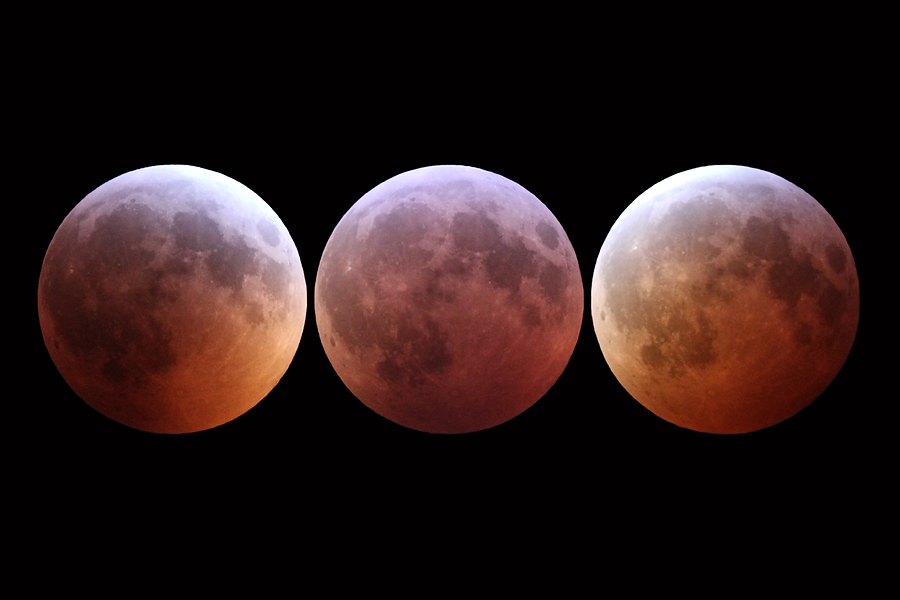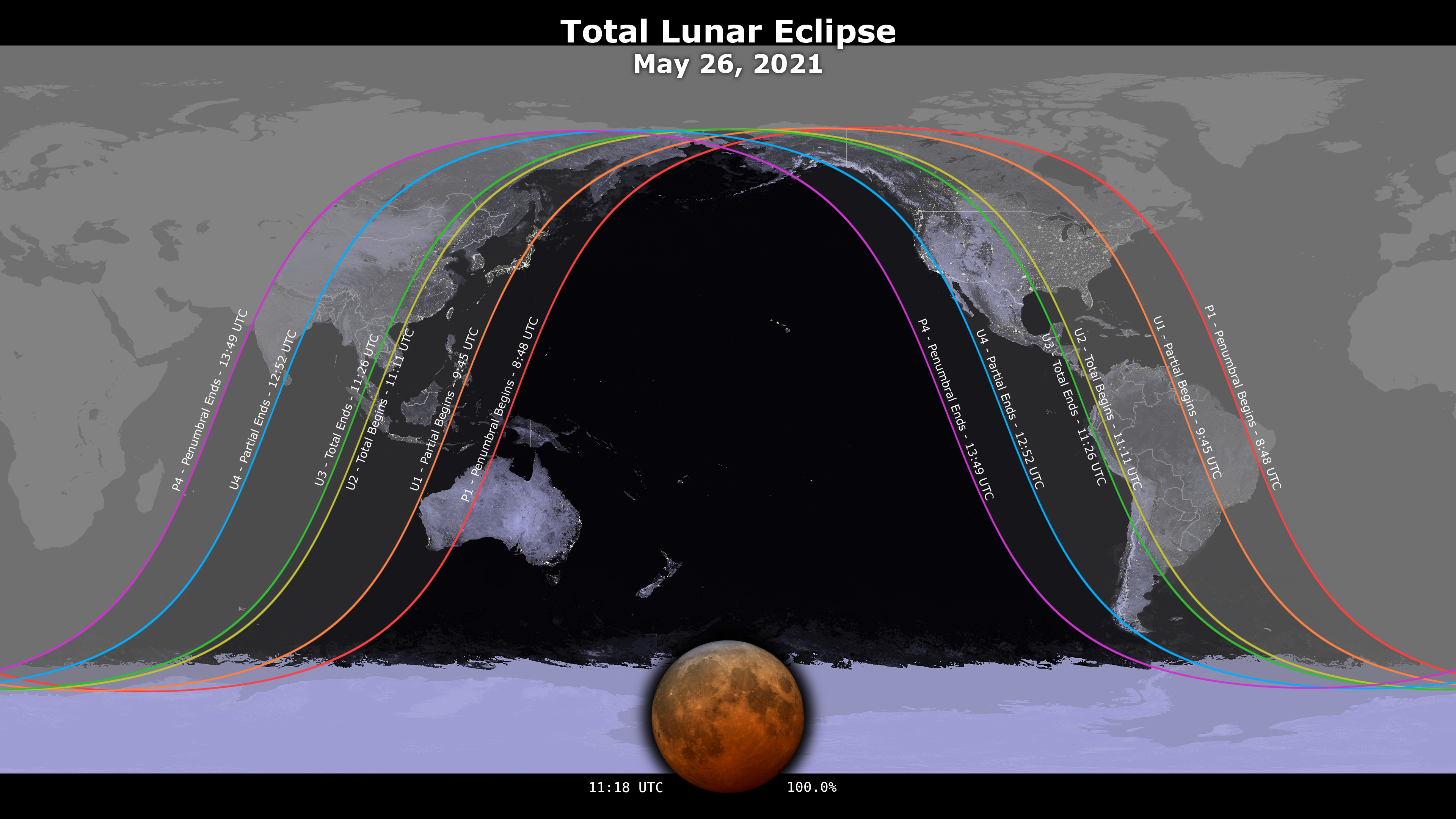Want to see the Super Flower Blood Moon eclipse? Here's what to expect
Editor's note: The Super Flower Blood Moon lunar eclipse has ended. We'll have a wrap story with images and observations soon. In the meantime, here's a replay of the eclipse from the Griffith Observatory in Los Angeles, California.
If you're excited to try and catch a glimpse of the Super Flower Blood Moon, the only total lunar eclipse of 2021, when it occurs Wednesday (May 26), you're in for a treat, according to NASA.
The total lunar eclipse will begin at 4:47 a.m. EDT (0847 GMT) and end at 9:50 a.m. EDT (1350 GMT), with peak totality — the "blood moon" stage — occurring at 7:16 a.m. EDT (1116 GMT). If it is daytime in your viewing location, you will have to watch webcasts of the eclipse to see it at its best.
During a lunar eclipse, Earth's shadow falls across the moon's face as our planet moves between the moon and the sun. In a total lunar eclipse, the moon gets completely covered by Earth's shadow as the moon and sun line up on exact opposite sides of our planet. So what does it look like and what can skywatchers at home expect?
Super Flower Blood Moon 2021: Where & when to see the supermoon eclipse Webcast info: How to watch the supermoon eclipse of 2021 online

If you take a photo of the 2021 total lunar eclipse let us know! You can send images and comments to spacephotos@space.com.
Well, for one, a lunar eclipse is "weird and it's beautiful and unusual," NASA science visualizer Ernie Wright, who takes scientific data to create animations and other visuals to help communicate complex science concepts, told Space.com. "A lunar eclipse is such a spectacular visual event that you get caught up in it. During the partial phases, you see the moon sort of getting slowly eaten away, over the course of maybe an hour, an hour and a half."
"And then suddenly," Wright added, "it's quite a bit darker, but it's also this deep red color. And it's a chance for you to sort of think about your place in the cosmos … spending just a little bit of time thinking about how amazing that is and how cool it is, and you are in a very specific place to be able to see it."
Breaking space news, the latest updates on rocket launches, skywatching events and more!
One of the most striking visual features of a lunar eclipse is the red color, as Wright mentioned. "During a total lunar eclipse, during totality, the moon turns this copper red color," which is how this phenomenon got the nickname "blood moon." Totality describes the time during a total lunar eclipse that the moon is completely in shadow.
This "unusual" colorful display is "caused by light refracting through the atmosphere of the Earth," Wright added. "And the color can vary from one lunar eclipse to another, it depends on how close the moon is to the center of the shadow."
The color of the moon during an eclipse also "depends on how much dust and aerosols and all kinds of things are in the Earth's atmosphere," he said.
Wright added that amateur astronomers could have some fun "rating the darkness of the moon in the color of the moon, because that gives us some insight into what causes the color, we don't fully understand it."
Related: Just how 'bloody' will the Super Flower Blood Moon eclipse look
Now, while you can expect to see some sort of colors pass across the face of the moon with a total lunar eclipse, "it's hard to predict," what it will exactly look like, Wright said. "We know some of the factors like depths in the shadow, but we don't know exactly what stuff in the Earth's atmosphere creates some of that color. So the more we observe these, and the more we record them and are careful about deciding what color it is, the better we'll be able to understand and maybe predict in the future what color they'll be."
Now, while totality for the 2021 total lunar eclipse on May 26 will last less than 15 minutes, lunar eclipses are quite lengthy compared to solar eclipses because, Wright put it simply, "the Earth's shadow is so much wider than the moon's shadow," as, during a solar eclipse, the moon gets between Earth and the sun, casting a shadow on Earth.
Editor's note: If you take a photo of the 2021 total lunar eclipse let us know! You can send images and comments to spacephotos@space.com.
Email Chelsea Gohd at cgohd@space.com or follow her on Twitter @chelsea_gohd. Follow us on Twitter @Spacedotcom and on Facebook.

Chelsea “Foxanne” Gohd joined Space.com in 2018 and is now a Senior Writer, writing about everything from climate change to planetary science and human spaceflight in both articles and on-camera in videos. With a degree in Public Health and biological sciences, Chelsea has written and worked for institutions including the American Museum of Natural History, Scientific American, Discover Magazine Blog, Astronomy Magazine and Live Science. When not writing, editing or filming something space-y, Chelsea "Foxanne" Gohd is writing music and performing as Foxanne, even launching a song to space in 2021 with Inspiration4. You can follow her on Twitter @chelsea_gohd and @foxannemusic.

